After winter cold days, early spring pleases everyone with fresh, fragrant vegetables on the shelves. Why not grow them yourself? In particular, the article will go about, all beloved, radish. The rapid, cold-rescue and unpretentious vegetable culture enters the diet of almost every family. Crisp, dense and juicy root rich is rich in vitamins and microelements, so necessary in spring, during the avitaminosis. And who does not "sweep the saliva" at the sight of fresh salad from radish and greenery, refilled by oil or sour cream?
How to grow radisis on your homework? What kind of grade to choose and how to care for him? Everything is quite easy and simple, "everyone will be able to make sure, after reading the article. There are also detailed advice for beginners, a description of the most popular varieties of radish with a detailed agricultural engineering of its cultivation.
Content
Description of radish
Radish is an annual or two-year-old plant of the cabbage family. This vegetable must be the name of the Latin Word "Radix", which in translation indicates - root. Indeed, valuable taste quality radish has due to its root, although the leaves are also eaten. Young leaves of radishes are used much less frequently than the root and add them mainly in salads or soups. The diameter of the root radium ranges from 2.5 cm and above, is covered with a skin of red, white, pink or purple. It has a pronounced sharp taste, thanks to the content of mustard oil in the pulp.
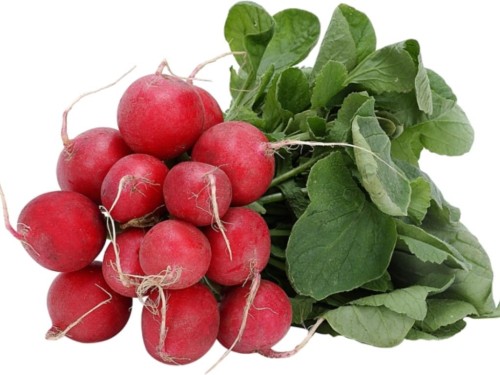
This vegetable is widespread worldwide and is grown almost everywhere. One of the first spring vegetables, radishes belongs to early, rapidly growing cultures. After the winter period and the lack of fresh vegetables, radishes can be called a leader of any dining table with confidence. Fresh, fragrant, rich in vitamins and microelements, radishes are indispensable for eating. Roots contain ascorbic acid, group vitamins B, P, PP, proteins, amino acids, calcium, iron, phosphorus salts, and other substance useful for the body. It can rightly be called a nutritious and tasty "springboard". Radish is grown not only in spring, but also in summer, until late autumn.
The cultivation of radishes suggests a long, from 10 to 12 hours, a light day, allowing to fully fruit. But the growing season is short, so it is possible to plant a root plant during the entire vegetable season, with an interval in one or two weeks.
For most parameters, radishes is an unpretentious plant. Culture cold-resistant, but light-minded.
Basic requirements for growing radish:
- don't make fresh organic fertilizers (for example, manure);
- regularly cut forward shoots, giving the opportunity to the maximum "swell" root;
- provide sufficient moisturizing.
With proper cultivation, radishes has a juicy, dense and crispy flesh. Also, the ripe root plant should not contain solid fibers or emptiness.
Seeds of radish
As a rule, many gardeners buy already ready-made packaged seeds of the serve varieties of root. Seeds of radish can be bought in any specialized store or order in the online store and get by mail. In the latter case, the purchase must be done in advance so that the product be delivered on time to the beginning of the sowing season.
But, if desired, seeds can be collected independently. To do this, you need to leave several units of spring radish on the site, until the plant blooms and will not throw out the arrow with seeds. Then the ripe seeds are collected and stored until the landing.
Varieties of radish
The variety of varieties of radisa is rightfully striking imagination. This vegetable is so widely used in gloomy that breeders tried "to glory." Such a variety is dictated by the fact that the specialists had the task of creating as farred as possible, commodity and stable varieties.
4 groups of varieties are distinguished, depending on the duration of the ripening of this vegetable culture:
Ultra-closure
Ripen in 18-20 days. The most famous of them:
- 18 days - the root plant is formed about 18 days under the condition of optimal favorable climatic conditions. Experience shows that the harvest can be collected by 20-25 days after the appearance of germs. The pulp has a juicy, gentle and tight, with a weakly sharp taste. The root of the cylindrical shape, covered with pink skin with a white tail, weighs until 15-17.
- Firstborn, it has a high yield, able to ripen for 16-18 days. Rights are large, slightly rounded, painted in red rich color. The flesh is juicy, with a sweet taste. The hybrid is resistant to the formation of arrows and cracking.
- Poker - matures in 18 days in greenhouse conditions. Korneflod red, with a dense and gentle pulp, pleasant taste. The variety is able to keep freshness for a long time, do not drag.
Early varieties
Mature for 20-30 days from the date of the first searches. The best of them includes:
- French breakfast - has an elongated, cylindrical shape and raspberry roof root, with a white tip. Redisse is large, weighing up to 45 g. The flesh is dense, not gritting. Of flaws: With sustainable hot weather forms arrows; Redisse is demanding of fertile and soft soil.
- Sax - has a round bright red root root, weighing up to 25 g. The flesh is dense, juicy, with slightly ground taste. The variety is convenient for transportation, long retains freshness. Grown in open and soil and in greenhouse conditions.
- White fangs, respectively, the name, radishes has white, has very large (up to 60 g), conical shape, root. The taste is soft, not sharp. The flesh is juicy and dense.
- It is roasting about 3 weeks, it has a high yield. Corneflands of medium size, weighing up to 25-30 g, dark red. The flesh is juicy and gentle, light or pink, slightly ground. Does not tolerate hot drunken weather.
- Cherry Bell - root-shaped roots, small (about 10 g). The flesh is juicy, crisp, pleasant to taste. Ripen in 20-22 days in the open soil.
- Lanquet - has a gentle, slightly watery flesh. The grade is resistant to short-formation, grown throughout the season.
- Camelot is a universal high-yielding grade for cultivation, both in the open soil and in the greenhouse. Ripens for 22-23 days. The root close of a rounded, slightly flat shaped shape of red and weighing no more than 30 g. The pulp with high taste, dense and oily. Perfectly tolerate temperature decrease and light half. It is considered one of the best varieties of radish.
- Chupa-Chups - has round and large, similar to candy, root. The flesh is gentle, the taste is soft. The variety is seeded in open ground, high yields mark.
- White Brekfest - grown in open soil in 20 days. The root of the cylindrical shape, white with a dense and juicy flesh. Taste gentle, not sharp.
- Rhodes - early grade with maturation of 19-22 days. Rounded, small, red, rootpode has a pronounced sharp taste. Long retains elasticity and does not flag.
- Champion - matures for 18-25 days. Kornemploda is bright red, round, not painful. Booms together and quickly.
- Celeste F1 Redish is a hybrid of Dutch breeding, unpretentious in care and very yield. The ripening time is up to 25 days. Grown in greenhouses and open soil.
Mediterranean grades
Ripen in 30-35 days. The most common such:
- Vera is a yield grade, resistant to stacking and cracking. Right red roots, dense.
- Ilka - a high-yielding grade with bright red, rounded roots, reaching from 15 to 25 g. The flesh is dense, juicy with a soft medium-sharp taste without bitterness. The culture of frost resistant, practically does not form a shooter.
- Helios - distinguished by yellow round root roots. The flesh is juicy and pleasant to taste.
- Quantum - has a 30-day ripening cycle. High-yielding grade, with delicate raspberry roots and slightly sweet taste. It is well stored and transported, keeping freshness and elasticity.
- Zlata - according to the name, rootpode has a bright yellow painting with a gentle and juicy flesh. Dates of ripening - up to 35 days. The cold-resistant variety, resistant to frost.
- Duro-high-yielding and overall grade. The root reaches in diameter up to 10 cm. Coated with red skin. Culture is demanding of thinning after the appearance of germs, resistant to obsession and cracking.
- Ice icicle - a mid-range variety resembling a small white icicle. The flesh is gentle, crisp, medium acute.
- Red with a white tip - root, weighing 10-14g and white, medium acute pulp. Outdated variety, easily forms arrows and trees.
Late varieties
For ripening it is necessary to 36-45 days. Best representatives of varieties are considered:
- The red magnitude is the name of the variety eloquently indicates the main advantages of the root. Large sizes, bright-scarlet color, cylindrical rootpode has a juicy and not sharp, taste, flesh. Redise is well stored for a long time (up to 4 months in sand tanks), resistant to diseases and pests. Sit into open ground.
- Dungansky 12 \\ 8 - cold-resistant variety, with a large, slightly flashed, rooted. The pulp of juicy, taste is pleasant, sweetish. The ripening time is about 50 days.
- Würzburg-59 - possesses large rounded root roots. The flesh is dense, juicy, long retains freshness and elasticity.
- Rampash - has elongated spindle-like white root roots. The taste is medium sharp, not painful. Resistant to the formation of arrows on the plant.

Perhaps the newcomer is difficult to understand such a huge amount of varieties, although experienced gardens, for sure, there will be our "pets". When choosing, it is important to determine the basic desired characteristics. Then, it is worth soaring for several different selected varieties, noting all the advantages and disadvantages of their growing. As a result, swing the most enduring and high-yielding, grow the most loved varieties.
Sowing radish
Radish is a unique ray vegetable culture with different sowing times in open ground. The earliest landings are considered March month, as soon as the soil warms up 4-5 cm, and the air temperature is up to +5 -10 ° C. Then it is better to organize a greenhouse, covering the bed with a film. You can land a shift and in open soil, because Radish is not afraid of frosts, but grow, radishes will be slower. For the first landings, chosen early varieties of radish. The optimal temperature for growth is +18 0s.
Late time seeding varies with September and only in the southern regions - early October.
As a rule, radish is planted according to the following scheme: in spring 3-4 times, in the second half of summer and until the end of September 2-3 times, depending on the variety. In the summer, in June-July, radishes, as a rule, are not planted. With arid and hot weather, the radish root rustles and becomes bitter.
Cool-resistant culture, radishes withstands freezing to -2 0s. Locking seeds "for the winter", for early spring crop, produced in November, before the first frosts. If you put radish before, "unplanned" shoots may appear, which are consequeled. After sowing, it is better to climb the soil to peat or humid on 3 cm.
To obtain a constantly fresh harvest of radishes, it is necessary to sow new seeds, as soon as the first leaves will reveal the earliest shoots.
Preparation of seeds
It is not necessary to somehow specially prepare seeds for landing. The only one can soak them in advance in water for several days and select the largest. Such events will help ensure timely friendly seed shoots of radish. When preparing seeds for a centenary sowing, it is not worth soaring them.
The seeds of radishes retain a good germination for 6 years, subject to storage in a dry ventilated place (paper bag or linen bag).
Landing radish
There are several ways to plant seed of radish:
- Ribbies
- Rows
- Swiss
- Under marker
Conditions for landing
When growing radish, they prefer with a sudent or loamy soils. In the subline compounds of soils is added for loose peat. In the case of acidic soils - conduct a lime. The soil for sowing radish is chosen loose and moistened. Pre-preparing a plot to sowing, the soil must be dissolved, explode, smash large closes, then rolish with water. Recommended to pre-eat the soil with overwhelming or compost (1 bucket on 1 m 2). In no case cannot be made fresh organic under radish. In the absence of overwhelmed manure or compost, 40-50 g of superphosphate and 15-20 g of potassium salt can be added to 1 m 2 Soil.
Radish - light-loving plantWhat you need to consider when choosing a place for sowing. The shadow will significantly slow down the growth of the plant, and promote the shorting of radish. As an option: You can plant radishes under the trees of early spring, and when the leaves are blown on the trees, - already collect the prepared harvest.
Plant long daylight Radish, with an increase in this period (for example, up to 14 hours), prepares for reproduction and releases the arrow with seeds. Adjust the duration of the daylight can be artificially, with a shelter with a black film. Lovely varieties to grow in spring does not make sense at all, as they do not have time to ripen until the deadline and, not by forming the root corner, are short. Convenient to grow radish at the end of summer or at the beginning of autumn, when the day day decreases. In this case, the booming does not occur, and fruiting continues to the most frosts.
Agrotechnika
When landing rowsYou need to make a shallow (0.5-1mm) groove, carefully sink seeds. Seeds need to be sowed not thick, with an interval of 5-6 cm (depending on the variety). The distance between the rows from 10 cm. Close the whole bed of the earth, slightly tritting to ensure the tight contact of seeds with soil for rapid germination. Already after 4-5 warm days, the first shoots will appear. With pre-soaking seeds, shoots will appear twice as fast. If at night there is a decrease in temperature, it is better to hide a bed at night with a film.
With a place of place on the household plot, radishes land under marker. The soil is prepared in the same way as under rows, making it even more homogeneous to the marker's teeth clearly imprinted on the ground. The marker is made of wooden planks with special teeth, which leave on the ground, when indulging, seed holes. With this method, on one meter it is possible to plant about 400 seeds and get, respectively, a high harvest. Sowing is obtained almost solid, but ordered, with a certain distance between seeds.
Method of sowing radish on tape. The tape with seeds is made independently or buy ready.
Convenient and easy way to sow swissWhen the seeds are simply scattered in bed. It is possible to then close the seeds with robbles or to climb the peat.
Planting seeds under winter, you need to prepared rows and loose soil, sink dry seeds, without watering them with water. Sevings are produced in November to get the first harvest of radish.
With the insufficient size of the household plot, Radish can land in early spring, and after its ripening and cleaning from the site, plant seedlings or seeds of thermal-loving vegetable crops (for example, tomatoes or cucumbers). Such an alternation will allow you to maximize your diet with vitamins of various crops from one site.
Plant compatibility
When choosing a site for planting radishes to ensure high crop yields, it is necessary to take into account the compatibility of plants. So, better to plant radishes in the place where previously grew by representatives of the nightshade family (potatoes, tomatoes), cucumbers or beans. After the cabbage, radish and horseradish, radish is better not to plant. It is preferable to change the landing site for the annual radish, providing, thus, each time the "new" predecessors.
Caring for radish
Radish - plant is unpretentious and easy to care for and not time-consuming. Enough to stick to the basic rules of root crop cultivation delicious and rich harvest is assured.
Watering
As noted earlier, radish - water-loving plant prefers soil moisture level of not less than 80%. This means that its growth, development and productivity in many ways depend on the timely watering.
So, after sowing, when the weather is dry, radishes watered daily, avoiding drying topsoil. After ripening root, the flow of water should be reduced to avoid cracking radish. Watering is carried out systematically: in the morning or in the evening, providing a constant slight moisture in the garden. Rare and abundant watering leads to cracking root crops. In cool weather, watering is reduced.
With a lack of moisture, radishes starts to taste bitter, and burst out into an arrow, blooming. This root vegetable, alas, is no longer suitable for human consumption.
thinning
It is advisable to sow radishes initially not a lot, keeping the necessary distance. Thick same shoots are subject to mandatory thinning. Decimation is performed when the steam leaves unfold, leaving the distance between the seedlings of 3 to 10 cm (depending on the variety and size of the mature root). In order to minimize damage to the roots of plants when thinning, use a rake. They carefully carried across the row, removing manually the extra seedlings and simultaneously loosen the soil in the garden.
spudding
Radish likes loose soil, so to loosen and remove weeds from the garden you need regularly. Loosening ideally performed after each watering. To facilitate maintenance, put on moist soil mulch layer of 2 cm (humus, peat).
Podchar
Manured soil - fertile soil for radishes. Root loves potash, nitrogen and phosphate fertilizers. Nitrogen fertilizers need to make in moderation, otherwise it will be developed, mainly greens and root will be oversaturated with nitrates.
On poor soils, radishes feed twice for the entire growing season, on fertile soils - just one feeder (mineral). The dosage is indicated above.
Favorable affects radishes Organic feeding: compost, humus, dung alive (with irrigation). The introduction of fresh manure, adversely affects the root of the root: it becomes hollow. Therefore, it is only overwhelming.
Fighting pests and diseases
We list the main pests and measures to combat them:
- Cruciferous flea(holes appear on the leaves). To combat it, you can scatter tobacco dust or wood ash. It is also possible to peel a solution with a solution of wood ash: 2 cups of fresh ash and 50 g of grated economic soap are dissolved in 10 liters of water. With massive crops, shelters made from metal-speaking supports, which attach spunbond. Such a structure along the entire length of the row protects the plant from the scorching sun and the cruciferous fleece. When the plant matures, the canopy is cleaned.
- Medvedamore often harms the early varieties of radishes in the greenhouse, where it is covered in the spring. If radishes are grown in the open soil, the Medveda rarely damages harvest.
The most dangerous diseases of the radish
- Blackleg, leads to the yellowing and twisting of the leaves, the root of the root of the root. To combat the disease, plants are treated (2-3 times with an interval per week) in the onion of the onion husk (20 g of husk pour water liter and insist the day).
- False torment dew. A sign of the disease is a white flare on the leaves, leading to their dying. Prevention will serve a thorough cleaning of plant residues on the garden, disinfection of seeds, not allowing water stress. In the case of severe damage, plants spray with burgundy liquid.
- Bacteriosis With which the leaves yellow are premature and root root.
- Dry rot (Fomoz).It is manifested by the formation on seeds, root and leaves of light spots with dark dots. Leads to the death of the plant. Prevention will be a spring-year-summer cleaning of plant residues on the garden, the heating of seeds is about 20 minutes in hot water (45 -50 degrees), followed by cooling.
If the use of environmental means is not enough, as an exception, the landing place is changed or the improved soil is carried out: watered with a solution of copper mood (1-2 tbsp. By 10 l. Water). Redisse, as an early culture, do not recommend processing with chemicals. All infected instances are removed.
Therefore, the best protection against diseases and pests is the observance of all rules of cultivation and care.
So, radishes are one of the most common vegetables, without which no spring-autumn season costs. A variety of salads, okers and vegetable dishes retain the freshness of perception and a wonderful aroma due to the dense, juicy, isolate to taste, the pulwing puldies. It is completely easy to grow this root, the main thing is to determine the variety and perform the elementary rules of the agrotechnology. Any novice gardener can easily grow this culture in her garden. Thus, on their own, growing and caring for radishes, you can ensure that your seven natural product is guaranteed. In addition, you will not have to worry about exceeding the number of nitrates and other harmful substances that are often found in the purchased product of unfair manufacturers.
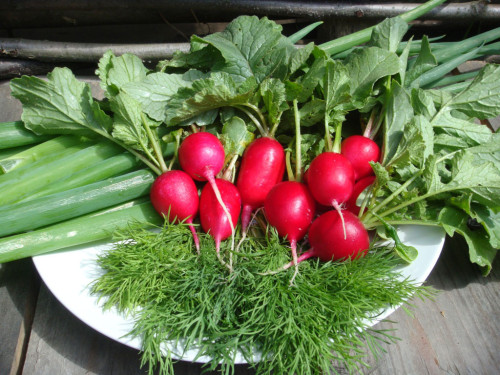
Radish, photo


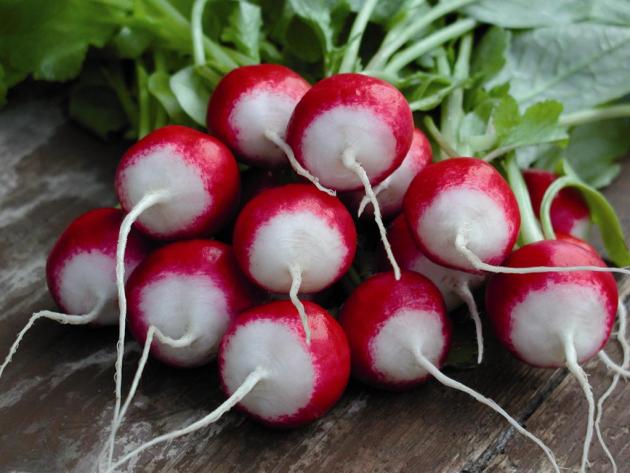
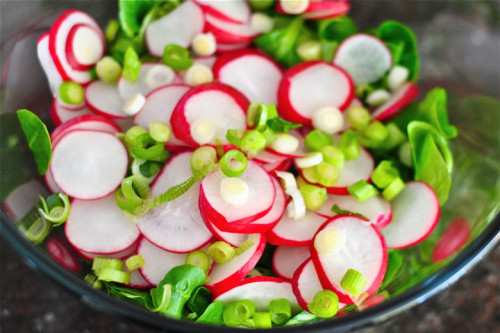
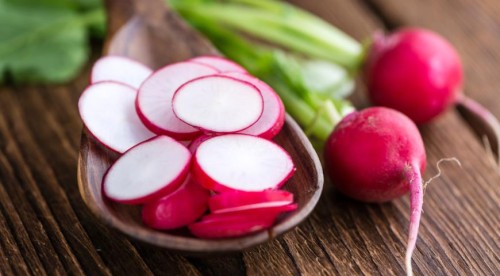
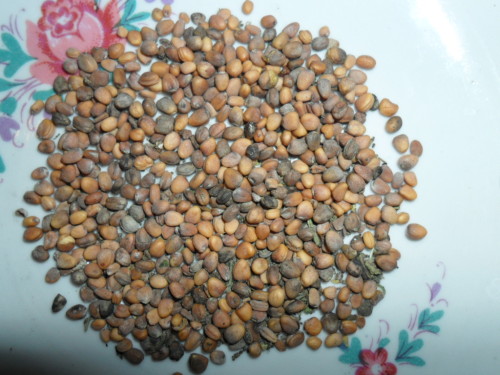
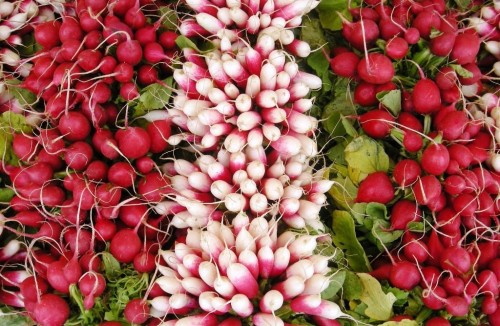
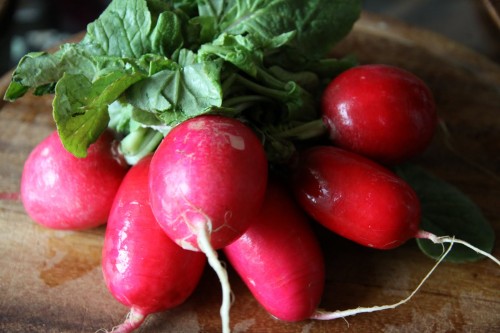
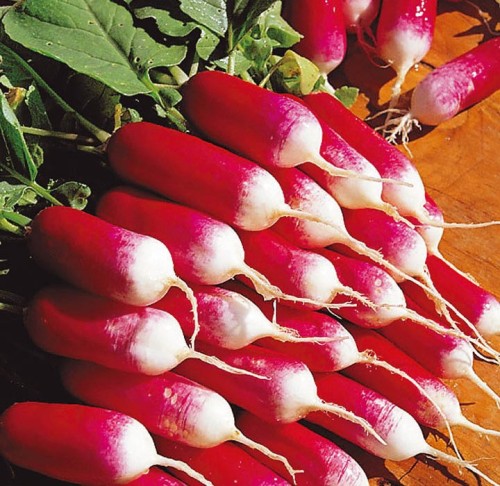
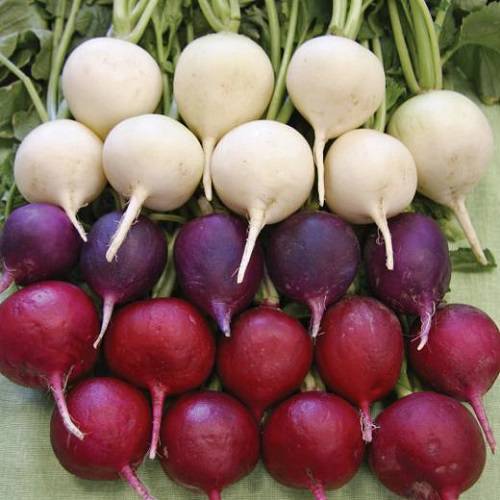
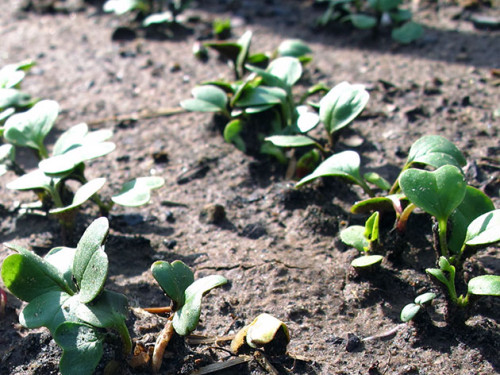
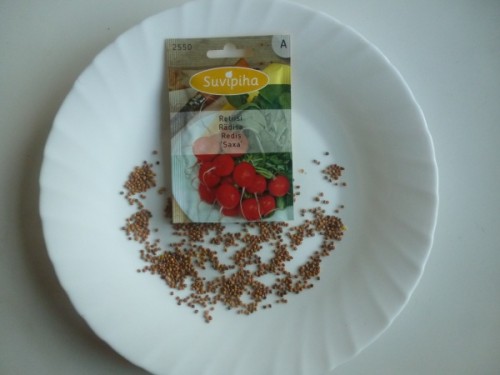

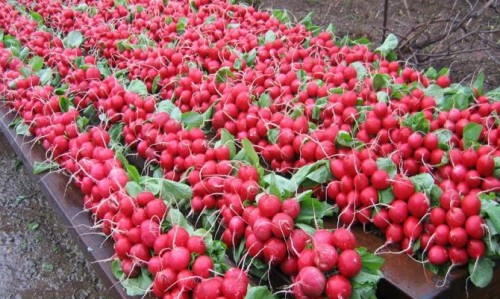
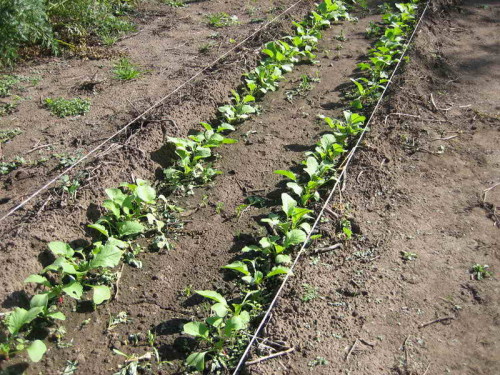
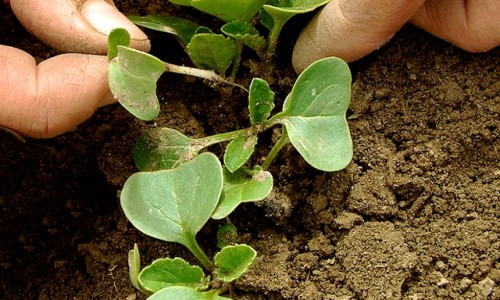
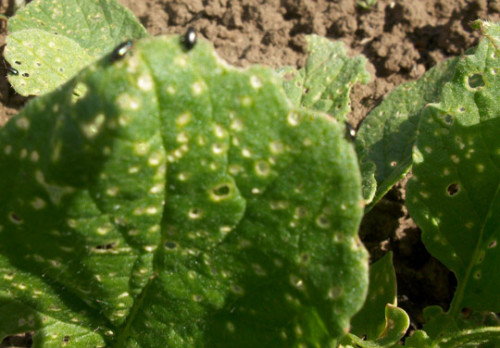
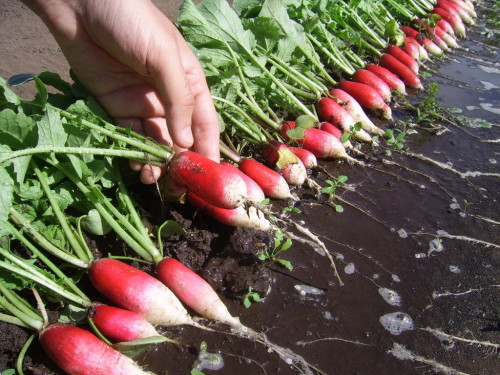
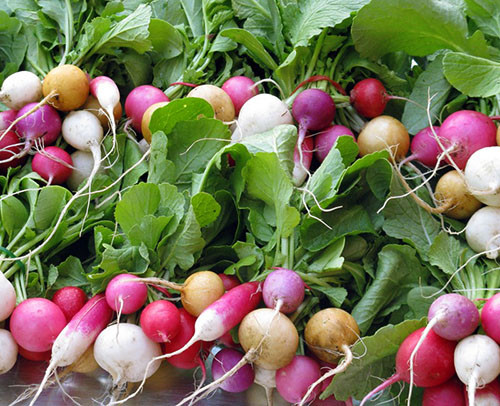
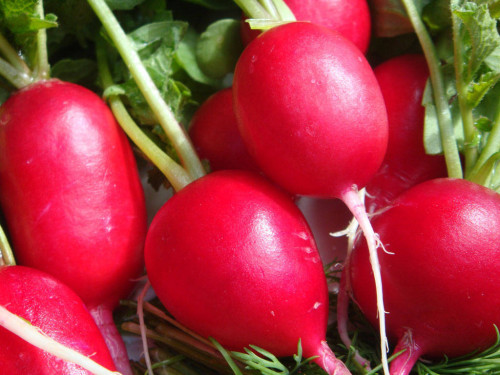
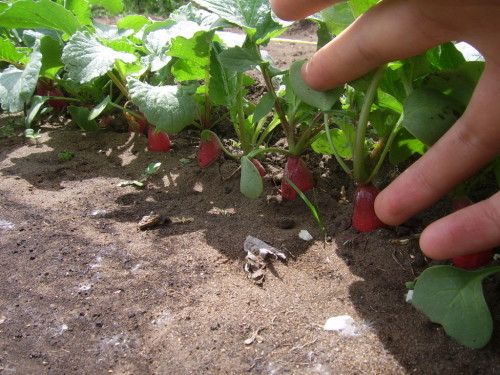
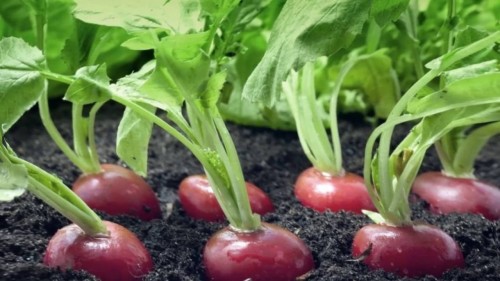
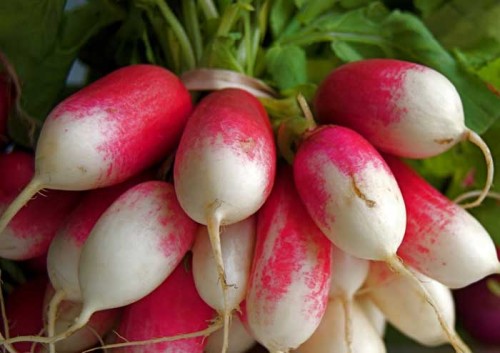




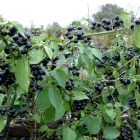

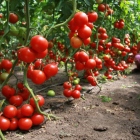
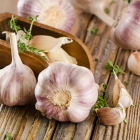

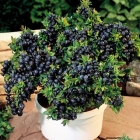
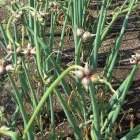
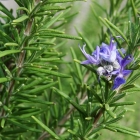
 Start a discussion ...
Start a discussion ...